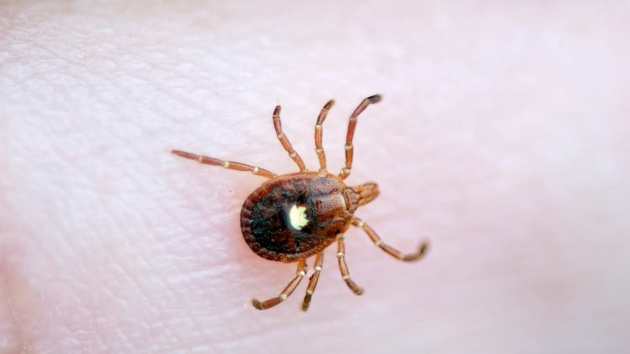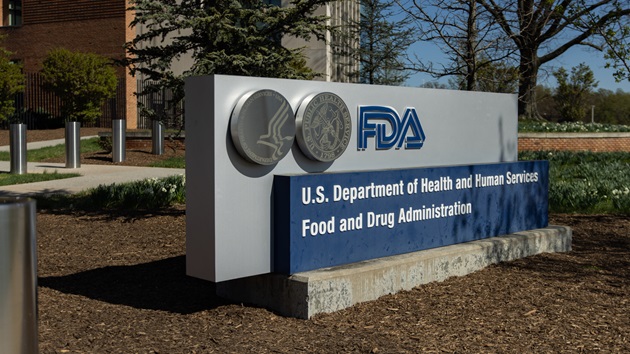Infant mortality rate increases 3% in 2022, rising for first time in two decades: CDC
Written by ABC Audio ALL RIGHTS RESERVED on November 1, 2023

(NEW YORK) — Infant mortality rates in the United States increased last year for the first time in two decades, according to new federal provisional data.
For the report, published early Wednesday by the Centers for Disease Control and Prevention’s National Center for Vital Statistics, researchers looked at birth/infant death data collected through the National Vital Statistics System.
Provisional data showed there were 5.6 infant deaths per 1,000 live births in 2022, which is 3% higher than the rate of 5.44 per 1,000 live births in 2021.
Although rates have been declining over the last several years, this marks the first year-to-year increase in more than two decades when the rate rose from 6.8 deaths per 1,000 in 2001 to 7.0 deaths in 2002.
The neonatal mortality rate — infant deaths at less than 28 days of life — also rose 3% from 3.49 per 1,000 live births in 2021 to 3.58 in 2022 and the postneonatal mortality rate — infant deaths between 28 and 364 days of life — grew 4% from 1.95 per 1,000 to 2.02 over the same period.
Dr. Tracey Wilkinson, an associate professor of pediatrics at Indiana University School of Medicine who is an expert on women’s access to reproductive health care, told ABC News she’s not surprised by the findings and that she sees a couple of reasons for the increase in infant mortality rates.
One is maternity care deserts — where’s there a lack or absence of maternity care — which limits the ability to care for infants properly. The second is limiting of access to abortion, particularly following the Supreme Court decision of Dobbs v. Jackson in June 2022, which overturned Roe v. Wade.
“Any pregnancy that is intended and planned tends to be a healthier outcome and healthy infant outcome,” Wilkinson, who was not involved in the report, said. “So, when you remove the ability for people to decide if and when to have families and continue pregnancies, ultimately, you are having more pregnancies continue that don’t have all those factors in place.”
She added, “Furthermore, we are hearing over and over again, women with non-viable fetuses with diagnoses that mean that they will not survive outside of the womb for any significant period of time, being forced to continue those pregnancies. And so that will also contribute to infant mortality because once those infants are born, they’re counted in these numbers.”
A recent analysis from ABC News and Boston Children’s Hospital found more than 1.7 million women, nearly 3% of women of reproductive age in the U.S., live in a county without access to abortion and with no access to maternity care.
The CDC report also looked at infant mortality rates when broken down by race/ethnicity of the mother.
Data showed increases in this rate among almost all ethnicity groups, except for Asian women, but the only statistically significant increases were for infants born to American Indian/Alaskan Native women and white women.
For American Indian/Alaskan Native women, the rate increased from 7.46 infant deaths per 1,000 to 9.06 deaths in 2022. For white women, the rate rose from 4.36 per 1,000 to 9.06.
“Disparities in health care and outcomes exist in everything,” Wilkinson said. “When you have restrictions to health care access, that always impacts minoritized communities more and what this data is showing is that now it’s also impacting non-minoritized communities like white women.”
When broken down by state, the report showed significant increases in the infant mortality rate in four states — Georgia, Iowa, Missouri and Texas — in 2022 compared with 2021 and a decrease in one state, Nevada.
Mortality rates also increased significantly for two of the 10 leading causes of death: maternal complications and bacterial sepsis.
Wilkinson said in her state of Indiana, and likely others, hospitals have been closing their labor & delivery wards, meaning many centers are lacking the capacity of people providing care for labor and delivery.
“You’re gonna have people delivering at hospitals that don’t have the expertise to take care of moms that get sick during pregnancy and delivery and infants that gets sick very soon after delivery, which is what I think of as bacterial sepsis of newborns,” she said.
She also added that in many states that have limited access to abortion and other reproductive health care, OB/GYNs may leave, which dwindles the number of experts available to care for pregnant patients in life-threatening situations, which could lead to even higher rates of infant mortality.
“As OBs decide to leave and not practice in certain areas, their ability to staff these hospitals decreases,” she said. “Not to ding any of my colleagues, but like emergency room doctors and internal medicine doctors are not experts in this field, but they might be the only people at that hospital when somebody presents in an obstetrical emergency.”
Copyright © 2023, ABC Audio. All rights reserved.

 KVSP
KVSP 




